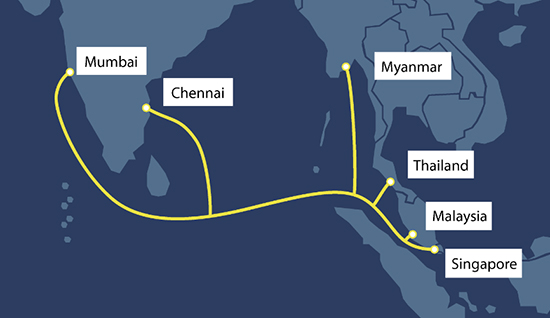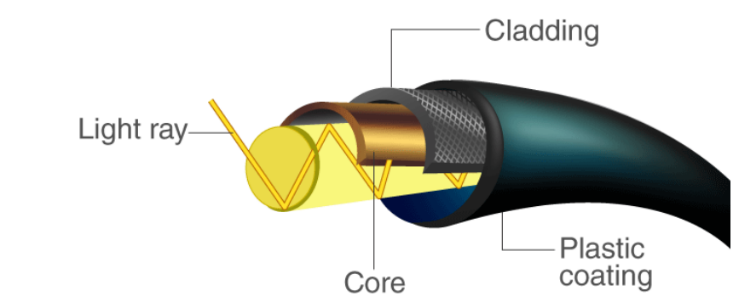MIST Submarine Cable System | 27 Jul 2022
Why in News?
Recently, the Ministry of Environment, Forest and Climate Change recommended MIST (Myanmar/Malaysia-India-Singapore Transit) Submarine Cable System for Coastal Regulation Zone (CRZ) clearance.
- This will be the 17th such Optical Fibre Cable System to land in Mumbai and is expected to be ready for service in 2023.
What is the MIST?
- MIST is an international submarine cable communication network, traversing the undersea to connect India with other Asian countries such as Myanmar, Thailand, Malaysia and Singapore.
- It is an 8,100km-long undersea transnational fibre optic cable system connecting Mumbai to Singapore, via Chennai.
- The cable system will terminate in Mumbai at Versova beach.
- Of the total length of the international undersea cable system, 523.50 km will be laid along the Tamil Nadu coastal waters about 12 nautical miles offshore. and about 202.06 km in the CRZ boundary of Maharashtra.
What is the Significance of the Project?
- MIST cable system will provide secure, reliable, robust and affordable telecom facilities in Asia.
- It will boost telecom connectivity between India and other Asian countries, namely Myanmar, Thailand, Malaysia and Singapore.
- This is a project of immense importance to global communications and will have a minimal footprint on Mumbai’s coastal environment.
- It would also help avoid conflict with various stakeholders considering the increasing number of international cable landing on the Chennai coast.
What are the Similar Upcoming Projects?
- Reliance Jio Infocomm’s India Asia Xpress (IAX), connecting India to the Maldives, Singapore, Sri Lanka and Thailand.
- India Europe Xpress (IEX), connecting India to Italy via Saudi Arabia and Greece.
- SeaMeWe-6 project, owned by a consortium of telecom providers, will connect Singapore to France via India, Bangladesh, Maldives.
- Africa2 cable, which will connect India with the United Kingdom via several African countries.
What is a Submarine Communications Cable?
- It is a cable laid on the seabed between land-based stations to transmit telecommunication signals across stretches of ocean and sea.
- Modern submarine cables use fiber-optic technology.
- The optical fibre elements are typically coated with plastic layers and contained in a protective tube suitable for the environment where the cable will be deployed.
- Compared to satellites, using internet connection through submarine cables is more reliable, cost efficient and of larger capacity.
What is an Optical Fibre?
- Optical fibre is the backbone of the digital infrastructure — the data is transmitted by light pulses travelling through long strands of thin fibre.
- Metal wires are preferred for transmission in optical fibre communication as signals travel with fewer damages.
- The optical fibre works on the principle of total internal reflection (TIR).
- Light rays can be used to transmit a huge amount of data (In case of long straight wire without any bend).
- In case of a bend, the optical cables are designed such that they bend all the light rays inwards (using TIR).


